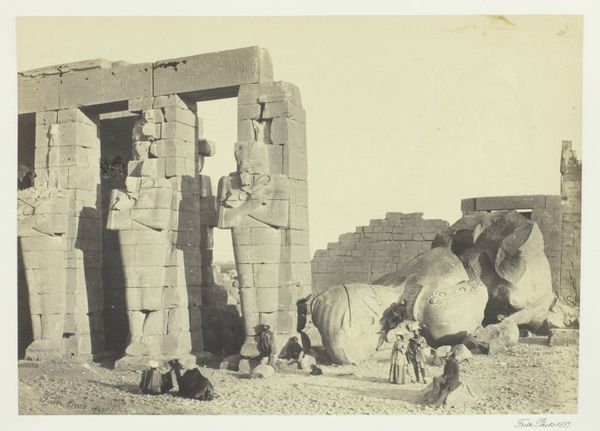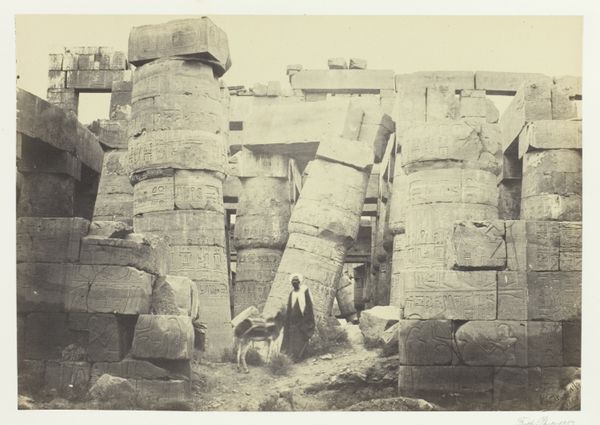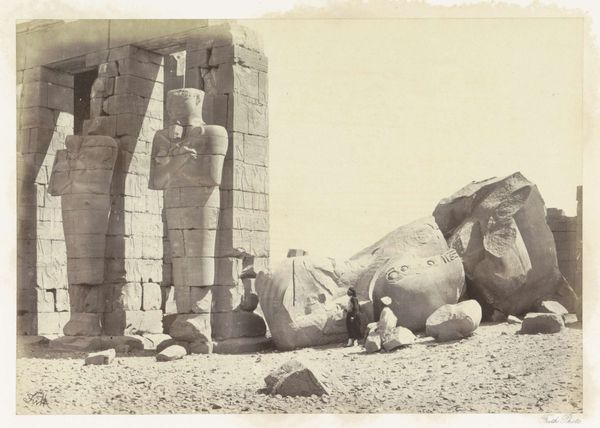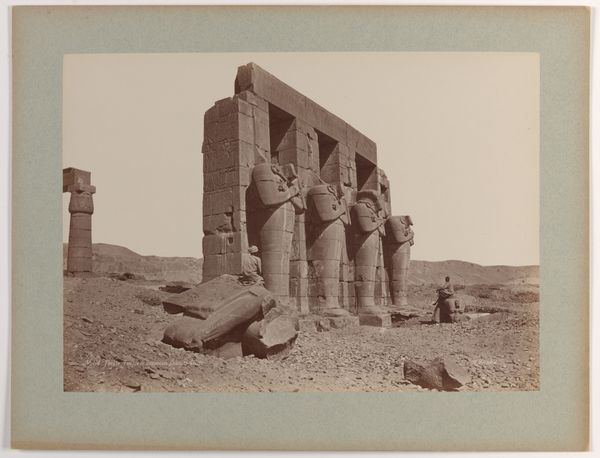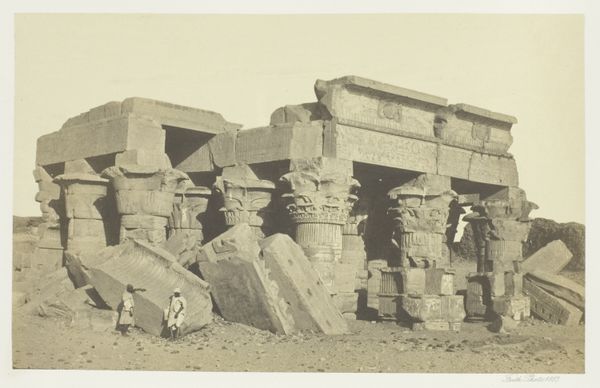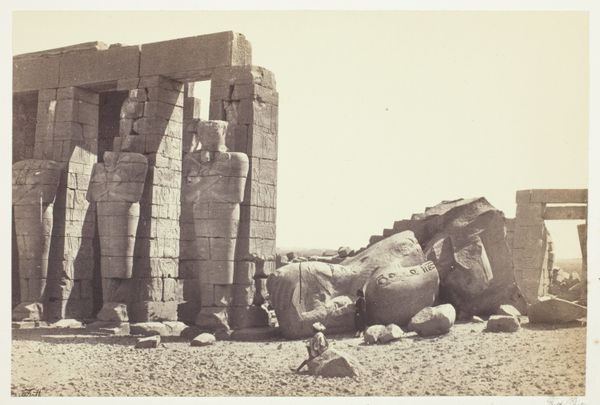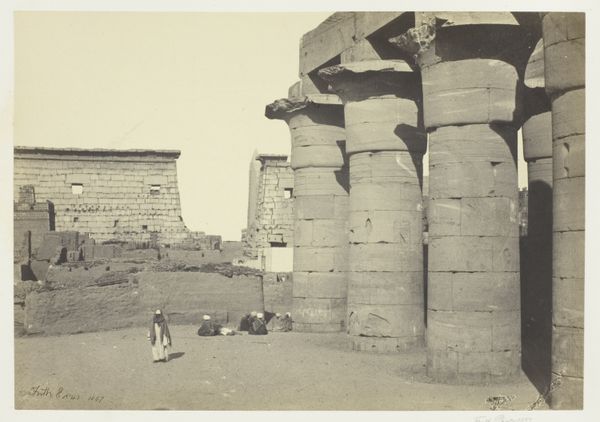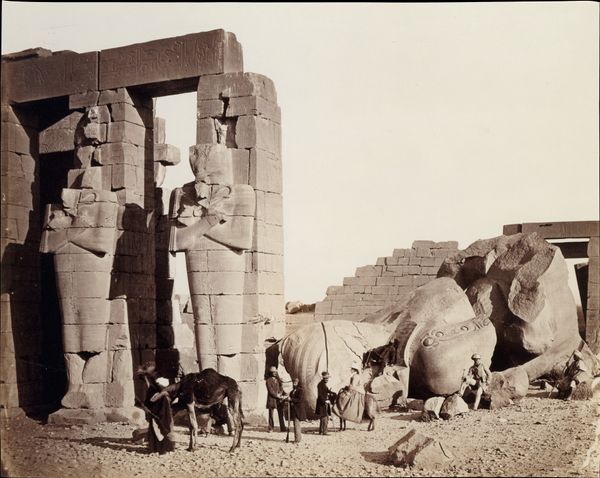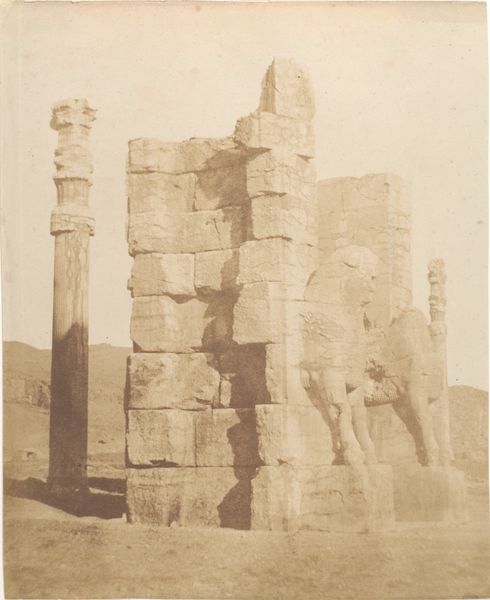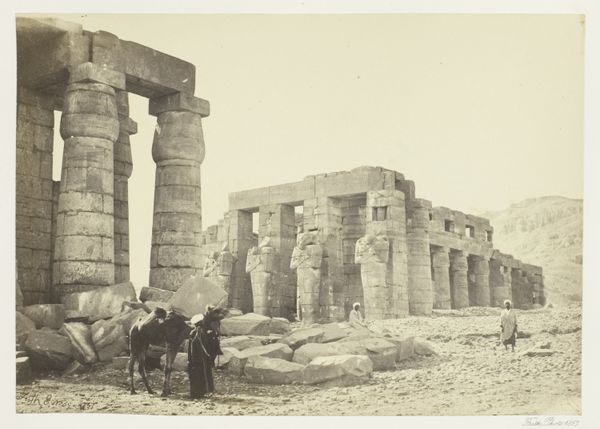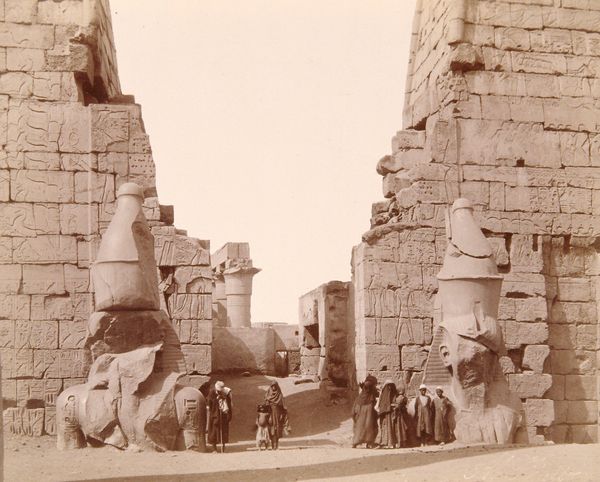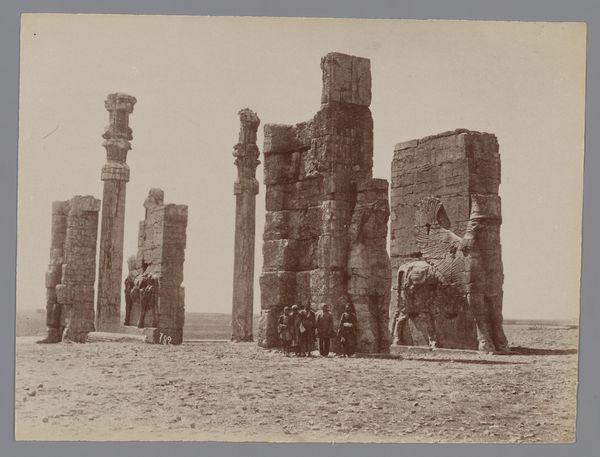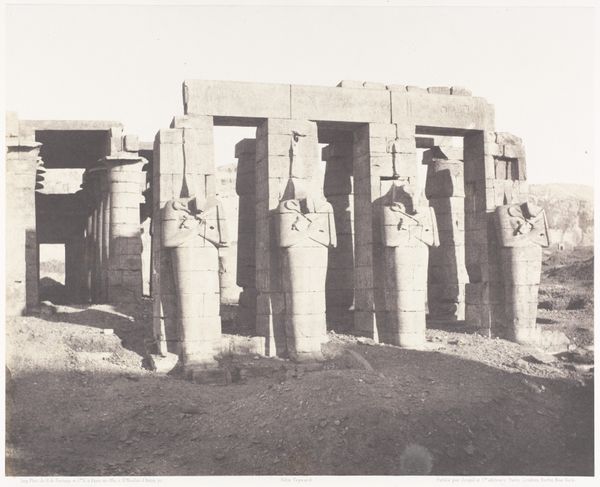
photography, architecture
#
landscape
#
ancient-egyptian-art
#
outdoor photography
#
photography
#
ancient-mediterranean
#
architecture
Dimensions: Image: 16.4 x 21.1 cm (6 7/16 x 8 5/16 in.) Mount: 31.2 x 43.8 cm (12 5/16 x 17 1/4 in.)
Copyright: Public Domain
This photograph, Colosses du Ramesséum, was taken by Maxime Du Camp, in the mid-19th century, using the calotype process, an early photographic technique. The image shows the ruins of the Ramesseum temple complex in Thebes, Egypt. The calotype process is critical to understanding this image. Unlike later photographic methods, the calotype used paper negatives, resulting in a softer, less detailed image. This technique was revolutionary, but also labor-intensive, involving a complex chemical process to treat the paper, expose the image, and then develop it. The very act of creating this image was part of a larger cultural and political project: the European fascination with and documentation of ancient Egypt. Du Camp's photograph isn't just a record; it’s a physical object imbued with the history of its making, as well as the history it depicts. By focusing on the materials and the making, we can appreciate how this image participates in a much broader story of labor, technology, and cultural exchange.
Comments
No comments
Be the first to comment and join the conversation on the ultimate creative platform.
